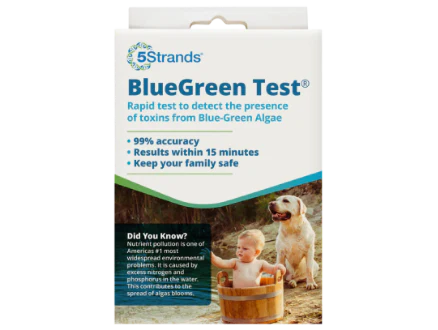Reasons for paw chewing and how you can help your dog kick the habit
Written by John Dermott — Medically reviewed by Dr. Michelle Diener
Updated October 31, 2021
Original article: https://betterpet.com/dog-chewing-paws/
The essentials
- Your dog may chew their paws for many common reasons — Including allergies, parasites, fungal infections, wounds/injuries, burns, chemical irritants, dry skin, and boredom.
- Persistent chewing can lead to infection — Too much licking can make matters worse, resulting in bald spots or further injury.
- Help your dog stop it — Treatment usually requires a vet visit and sometimes medication. Pet parents must be consistent with proper hygiene and care.
You may notice that your dog has shifted their chewing habits away from their toys to their very own toes. When you go to investigate, they quickly pull the paw away. Something’s up.
If your dog is showing sensitivity to their paws and has started chewing them, they’re probably experiencing some level of pain or discomfort. But it could also be as simple as boredom. Either way, excessive chewing isn’t a good sign, and it can lead to worsening complications.
Let’s take a look at reasons why your dog may be chewing their paws and ways you can treat them.
10 reasons your dog may be chewing their paws
Though not exhaustive, these are some of the most common reasons why your pup might be chewing their paw pads.
1. Allergies (or Intolerances)
Grass, dirt, specific kinds of food, molds, and fleas can cause itchy skin and watery eyes in dogs.
What to look for: Itching or biting that occurs shortly after being outside or after eating. Does chewing occur at certain times of the year?
Treatments: Allergies are often seasonal or food-related. Consult your vet about altering your dog’s diet or testing for allergens. You may also consider an aller-immune supplement such as Native Pet’s or Premium Pet Care’s. Consult your vet before giving your dog any antihistamines or other medications.
2. Chemical irritants
Yard fertilizers and treatments, indoor/outdoor pest control applications, floor cleaners, and salted streets can all irritate a dog’s paw pads.

What to look for: Paw chewing occurs after chemical applications, indoors or outdoors. Redness, itching, inflammation.
Treatments: These strong chemicals may be irritating your pup’s skin, causing dermatitis, or worse. Most professional services recommend avoiding treated surfaces for a specific amount of time after application (e.g., several hours), so keep your pup off. You can be conservative and add additional time to be safe.
3. Burns
What to look for: Paw chewing occurs when it’s hot outside or after walking on roads, sidewalks, pavement, or the beach.
Treatments: These surfaces absorb sunlight and heat up quickly. Though well protected, dog paws can burn too! On hot days, try walking them on cooler surfaces, like grass, to stop your dog’s paws from baking. If your dog does develop burns on the paw pads, schedule an appointment with your local vet to have the wounds looked at as soon as possible so that your dog receives treatment right away.
4. Wounds/injuries
Your pup is on all four feet every day. Their paws are susceptible to ingrown nails, torn toenails, nail bed infections, cuts, wear and tear, and even stingers from insects.
What to look for: Swelling, bleeding, pain, or pad abrasions. Check the nails Wounds and injuries often occur after a long hike or exposure to icy snow, which can cut paws.
Treatments: Small wounds and cuts should be cleaned. However, ingrown nails, torn toenails, or torn paw pads should be treated by your veterinarian.
5. Arthritis
What to look for: Limping, hindered movement, pain, or favoring legs.
Treatments: Arthritis is common in dogs, and your vet can provide a treatment plan, which may include oral medications, cold laser treatments, and/or injections.
6. Cysts
What to look for: Lumps or protrusions on or around your dog’s paw. Excessive paw licking.
Treatments: Cysts can be very uncomfortable and painful for your dog. Irritation will likely persist until the cyst is removed by a vet.
7. Dry skin
What to look for: Dry, flaky, or cracked paws.
Treatments: Pet lotions, aloes, and salves can be applied to help with the cracking of the paws. However, do not bandage the feet as this can trap moisture and lead to a skin infection. If persistent, your vet may need to prescribe medication.
8. Parasites
Fleas, ticks, and mites can all bite your dog’s skin and cause irritation.
What to look for: Check for any embedded parasites, particularly after walks in tall grass or wooded areas.
Treatments: Ticks can be removed manually with tweezers and some fleas can be removed with the use of a flea comb. However, if you see any fleas or ticks on your pet, it is important to consult with your local veterinarian on which flea/tick prevention to use in order to eliminate the fleas and ticks entirely and prevent them from ever returning.
9. Fungal infection
Some of the most common fungal infections seen on doggie paws are ringworm and yeast.
What to look for: Bald spots in the fur, rashes, red and crusty lesions
Treatments: There are several topical antifungal products to use which include medicated shampoos, sprays, and wipes. However, if your dog has several ringworm lesions or yeasty areas on the body, then topical therapy alone is not going to be enough to treat the infection. A vet will need to prescribe an oral antifungal medication as well for treatment.
10. Boredom/anxiety
What to look for: Sad puppy eyes, restlessness, pacing, damage to furniture, clothing, or household items
Treatments: Dogs need a lot of attention and will often lick and chew their paws if they aren’t getting enough of it. Work in additional playtime, exercise, or mental stimulation (games, tricks, etc.) to keep them from getting bored and/or anxious. For pups with separation anxiety, some medications and supplements may help calm them, but it’s usually a short-term fix for a deeper issue.
👉 You may have to bust out the dreaded cone to keep your pup from chewing and licking, particularly after you have applied any topical medication to their paws.

What are the effects of paw chewing?
When a dog licks and chews on its paws, it’s often because its paws are irritated in some way, and this is an instinctual reaction. That’s because their saliva has antiseptic properties that can help clean wounds and even inhibit the development of some nasty bacteria, such as E.coli and Streptococcus canis, among others.
However, too much licking and chewing can actually make matters worse, resulting in bald spots or further injury by not allowing wounds to heal. What’s more, moisture from saliva can get trapped in the paws, making it easier for bacteria and yeast to breed, resulting in infection.
If not treated, chewing can also become a sort of compulsory psychological/behavioral tic — one that’s hard to overcome. The action becomes habitual to the point where every time they lay down, they start to lick and chew. It’s a vicious cycle only broken by deliberate distraction and stimulation.
👉 If you’ve reprimanded paw chewing behavior, keep an eye on your dog. They may sneak away out of sight to chew their paws, knowing they will be scolded if observed chewing.
When to speak to your vet about paw chewing
Dogs lick, chew, and clean their paws as part of their self-grooming process. It’s essentially their way of giving themselves a bath. But it’s important to understand when it’s gone beyond self-grooming and into medical-attention territory. Here are some signs to look out for:
- Persistent chewing or intense licking
- Excessive bleeding or gaping wounds
- Embedded foreign objects
- Swelling, pus, or odor
If any of these symptoms are observed, or if the skin is bleeding from excessive licking/chewing or from a wound, then a vet visit should be scheduled as soon as possible.
👉 Always wash your hands with soap and water before handling your dog’s paws to prevent infection.
Tips for paw hygiene and care
Keep your pup’s paws healthy with regular care and proper hygiene. The ASPCA provides practical guidelines for paw maintenance:
- Ensure that nails are trimmed regularly
- Be on the lookout for skin irritation and what could be causing it (allergies, shampoos, food, parasites, etc.)
- Check paws frequently to make sure they’re free of wounds, embedded foreign objects, or redness and infections.
Hydrate up with paw balms
Give special attention to your dog’s paw pads. They provide shock absorption, protect underlying tissue, and are the first line of defense against wear and tear and exposure to the elements.
Dog paw balms are a must to keep them in top shape, especially during cold weather. Paw Soother™ by Natural Dog Company is one of our favorites because it’s made with organic, vegan ingredients that won’t irritate your doggie’s itchy paws.

Cover up those paws
Though not always the first choice for dogs, you might also consider using dog boots. These are great for longer walks, snow, hot pavement, and pest avoidance. But be warned — They certainly take some getting used to, for both you and your dog! Make sure the booties aren’t put on too tight or worn for more than 1-2 hours at a time as they can cause swelling or infection.
👉 These anti-slip booties feature reflective straps, so your dog can be easily seen at night.
Keep your doggie entertained and stress-free
And sometimes it’s sheer boredom, stress, or a significant life event (loss of pet pals, moving, separation, etc.) that’s making your dog focus on their paws. So, make sure your dog is mentally stimulated, is getting plenty of exercise, and has other things handy to chew on besides their paws, like chew toys or dental chews to clean those teeth.
In order to rule out whether it is an intolerance, 5Strands has developed an at home hair testing kit to test your pet for over 380 food and environmental triggers that could be causing your pet to bite their paws!
When your vet has ruled out all of these other reasons for the paw biting, it may be your pets food. The best way to determine this is to conduct an elimination plan. 5Strands Affordable Testing gives you a great place to start by taking out all the guesswork. Just follow the outline provided for the elimination plan and you will start seeing results in just a few short weeks if your pets symptoms were from a food intolerance.

Start with the food elimination plan first since that is what you can control. You can’t control the environment but you can try to alter your pets lifestyle if their symptoms are coming from an environmental trigger.

















